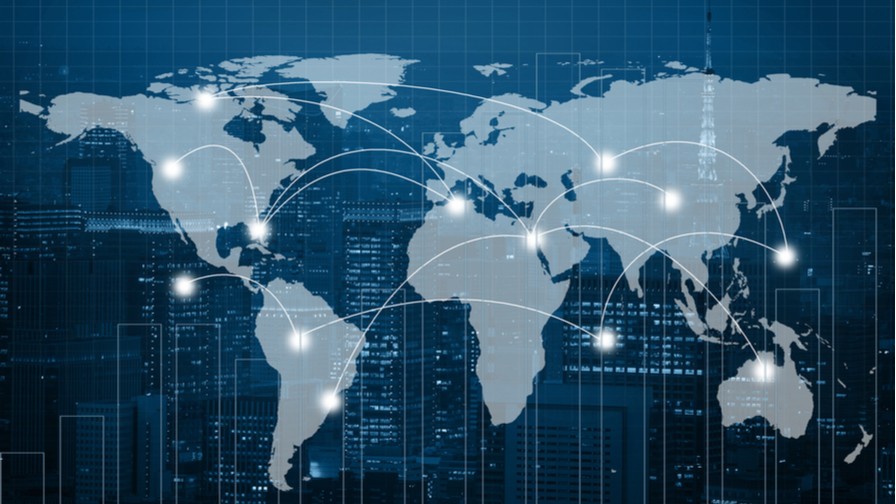IMF expects stronger growth
June 7, 2018 | Expert Insights

The International Monetary Fund (IMF) has predicted a global growth of 3.9% for 2018 and 2019. Global growth was 0.5 percentage points faster in 2016 and strongest since 2011.
Background
The International Monetary Fund (IMF) is an international organization headquartered in Washington, D.C. It is comprised of 189 countries that aim to foster global monetary cooperation, secure financial stability, facilitate international trade, promote high employment and sustainable economic growth, and reduce poverty around the world. It was formed in 1945 at the Bretton Woods Conference. Initially, it was formally started with 29 members with the goal of reconstructing the international payment system. However, its role has now changed to managing balance of payments difficulties and international financial crises.
The World Economic Outlook is a survey conducted and published by the IMF. It is published biannually and partly updated two times a year. It presents the findings and analysis of global economic developments during the near and medium term, with projections for up to four years into the future.
Analysis
According to the International Monetary Fund’s latest forecast, the global economy is on course to grow 3.9% this year, the fastest pace since 2011. It is believed that every major economy expected to experience a balanced growth for the second year in a row.
The improvement in global growth was supported by an investment recovery in advanced economies, continued strong growth in emerging Asia, a notable upswing in Europe and signs of recovery in several commodity exporters. According to the IMF, this growth is expected to continue in 2019 supported by strong momentum, favorable market sentiments, accommodative financial conditions, and the domestic and international repercussions of expansionary fiscal policy of the United States.
The IMF expects the global economy to continue to strengthen despite a decline in global stock markets seen earlier this year along with the trade tensions between the US and China. However, despite the ongoing disputes, the IMF predicts trade volumes to grow. Overall world trade volumes grew 4.9% in 2017, up from 2.3% in 2016. For 2018, the forecasts call for trade to increase by 5.1%.
During 2017, global economic output was reported at 3.8% compared to 2016. This growth was noted as a considerable expansion, indicating that more than two-thirds of all countries are accelerating. In the first few months of 2018, the year has already shaped up to be stronger than estimated in IMF’s January release. Growth in the Eurozone and US is expected to touch 0.2 percentage point higher than previously estimated. In 2017, both the US and Eurozone grew 2.3% when compared to 2016 and the IMF forecasts growth to strengthen for both in 2018, to 2.9% and 2.4%, respectively.
The IMF raised its 2018 forecast for UK and other advanced economies to 0.1 percentage point higher, 0.3 point higher for Europe’s emerging-market nations and 0.4 point higher for Brazil. Among the world’s 20 largest economies, only Saudi Arabia’s is estimated to have shrunk last year, partly due to falling oil prices. Increase in investment spending and acceleration in global trade has helped drive growth higher.
India is projected to grow at 7.4% of its gross domestic product (GDP) in 2018 as against China’s 6.8%, the International Monetary Fund (IMF) said, making it the fastest growing economy among emerging economies. This follows India’s slowdown last year due to demonetization and the implementation of goods and services tax (GST).
Counter Point
Although most of the global trading system risks have been torn apart, concerns arise over the tariff showdown between the US and China. Growing protectionism is a sign that a health check for the world economy must be periodically made to address the public’s concerns and skepticism. Major economies engaging in a trade war at a time of widespread economic expansion seems inconsistent, especially when the expansion is reliant on investment and trade.
In developed economies, ageing populations and low growth in productivity could mean that the nations are unlikely to achieve the per capita growth rates. Among developing countries, those that depend on exporting commodities would need to diversify their economies. Debt levels - private and government - are very high, which could lead to debtors getting into difficulty with repayments as interest rates increase from the post-financial crisis lows.
Assessment
Our assessment is that the current global trade tensions will further increase the volatility in the financial market. We believe that an increase in tariffs and nontariff trade barriers could harm market sentiment, disrupt global supply chains, and slow the spread of new technologies, reducing global productivity and investment.








Comments